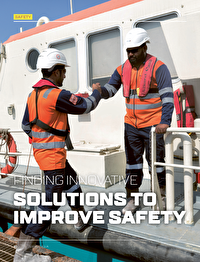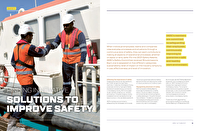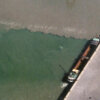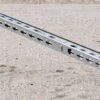Affirming the importance of safety
Dredging activities can be risky operations with hidden dangers amongst heavy machinery. In response, the dredging industry proactively maintains a high level of safety standards. A representative of contractors in the dredging industry, IADC encourages its own members, as well as non-members participating in the global dredging industry, to establish common standards and a high level of conduct in their worldwide operations.
IADC’s members are committed to safeguarding their employees, continuously improving to guarantee a safe and healthy work environment and reducing the number of industry accidents and incidents to zero.
Recognising advancers of safety
IADC conceived its Safety Award to encourage the development of safety skills on the job and reward individuals and companies demonstrating diligence in safety awareness in the performance of their profession. The award is a recognition of the exceptional safety performance demonstrated by a particular project, product, ship, team or employee(s).
The winners of both awards will be announced during IADC's virtual Annual General Meeting on 16 September 2021.
Dredging contractor safety award submissions
SIMOPS between two TSHD dredgers by Jan De Nul
Jan De Nul’s first submission is a tool that visualises and controls the maximum distance between two TSHD dredgers based on the length of a floating pipeline and live position of both ships. This allows for greater control in the challenging operation of pumping dredged material between two vessels. Due to the nature of the works on a project in Germany, JDN’s dredgers TSHD Pedro Alvares Cabral (PA) and Tristao da Cunha (TC) had to be connected by means of a floating pipeline. Dredged material was then pumped via the pipeline from the larger TSHD (PC) into the smaller TSHD (TC).
The operation, carried out on the river Elbe, presented several challenges, primarily maintaining the vessels positions with difficult site conditions. Other challenges included the smaller TSHD being pushed out of position due to the current, changing weather conditions and having to maintain a certain length of floating pipeline. Coordination of the relative movements of both TSHD dredgers is crucial in this type of SIMOPS. The position of the TSHD (PA) was transmitted in real time to the TSHD (TC) by means of Rajant wireless network set-up, making it possible to ensure the bow of the TSHD (TC) remained within the predefined circle. The diameter was adjusted when current or weather conditions changed.
By means of this active monitoring system, increased forces at the couplings and in the floating pipeline could be prevented. Additionally, the smaller TSHD (TC) did not have to drop its anchor, resulting in reduced cycle times without compromising on operational control. Crew, having used the tool consistently on the project, found one of its greatest benefits is its use at night when no direct visibility of the pipeline was possible.

















































